► We drive the biggest MINI to date
► Extra size brings greater practicality…
► … and, surprisingly, no less driving fun
After cutting our teeth on the 300hp John Cooper Works model, we’ve finally had the chance to drive the common-or-garden MINI Countryman. We’re pleased to report that it was worth the wait, too. It’s a genuinely fun and practical family SUV.
The new car has changed quite a bit over the old one, though. It’s a damn sight bigger for a start. Now, the Countryman is a more faithful rival for the likes of the Nissan Qashqai and Kia Sportage, which is sure to make classic Mini purists froth at the gills.
Despite the size increase (and MINI’s unrelenting focus on the premium end of the market), prices only start from around £30,000. That means the cheapest Countryman is only around £2,000 more expensive than the most basic Qashqai.
And we reckon you can justify that added expense because, as we’ll explain below, the Countryman is a better car in almost every measurable respect. If you’re a keen driver with family responsibilities, you might have just found your next new car.
What are the specs?
The standard Countryman is available with a choice of two engines. The most basic Countryman C features a 1.5-litre three-cylinder petrol engine that produces 168bhp and 206lb ft of torque. It sends power to the front wheels through an eight-speed automatic gearbox and can sprint from 0–62mph in 8.3 seconds.
That’s more than enough poke. The Countryman’s three-pot acts remarkably like the original Mini’s A-Series engine, serving up its power in meaty chunks. Its eagerness is helped by the eight-speed automatic, which is more than happy to jump down a few cogs to get the engine spinning in its sweet spot.
The three pot even sounds good. MINI hasn’t swaddled the engine in sound deadening or completely choked it down with silencers, so you can enjoy listening to it bark and whistle on the other side of the firewall when you’re hammering it. Somehow, it’s never intrusive when you’re cruising, though. It just melts into the background.
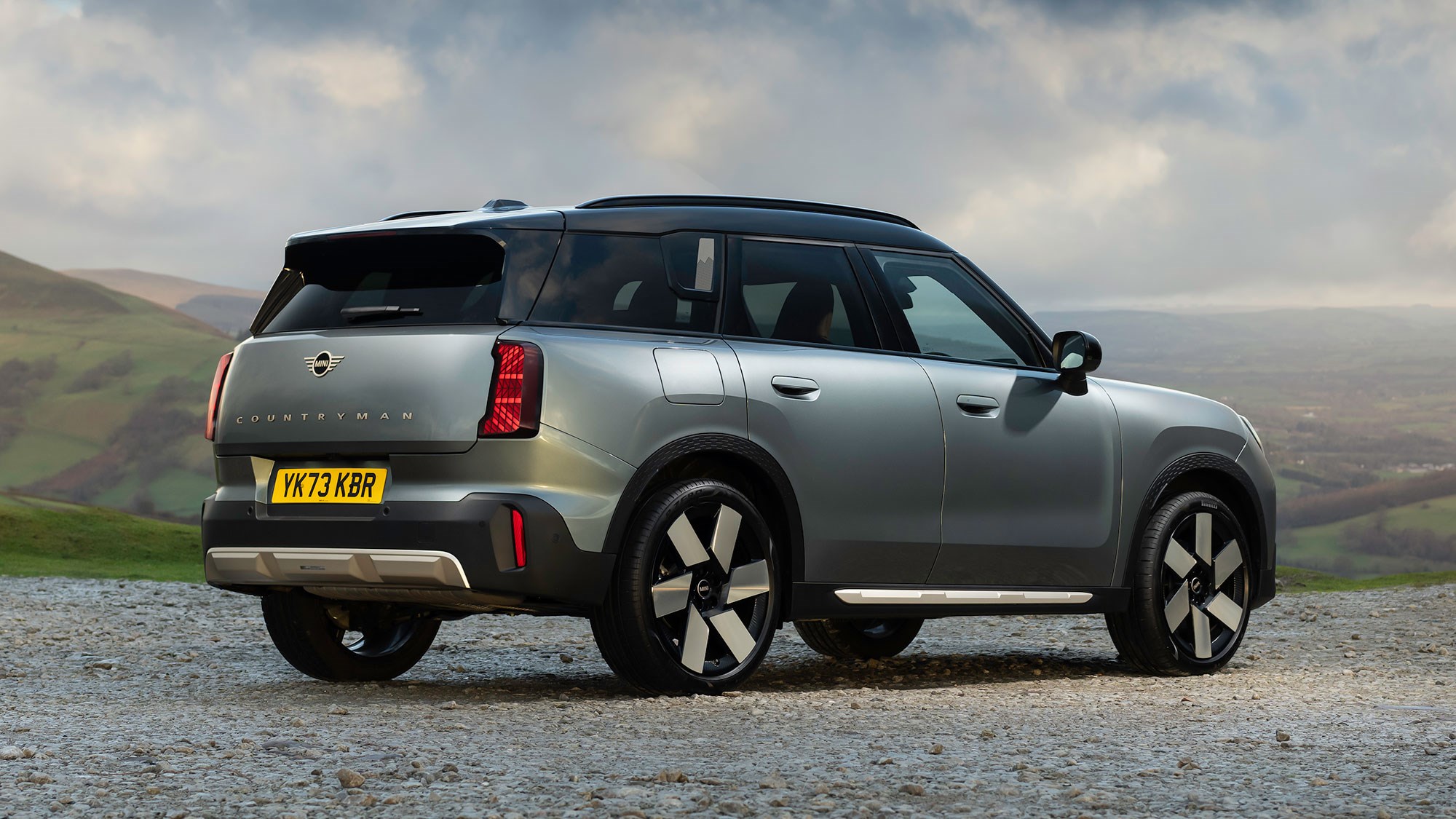
If you want a bit more performance but don’t fancy stepping up to the JCW, you can opt for the Cooper S ALL 4. It sports a larger 2.0-litre four-cylinder petrol engine with 215bhp and 266lb ft of torque – and as the end of its badging suggests, you also get four-wheel drive to help tame the extra firepower. The additional grunt trims the Countryman’s 0–62mph time down to 7.1 seconds.
It’s also worth mentioning that, unlike the previous Countryman, you can’t have the new car with a manual gearbox. The closest you’ll get is MINI’s optional ‘Sport’ paddle shift gearbox. Otherwise, it’s automatic or nothing.
MINI also offers a pure-electric version of the Countryman for those wracked with guilt over the state of the global climate crisis. You can learn more about that model in our dedicated Countryman Electric review.
How does it drive?
Very well indeed. We sent our biggest MINI sceptic on the UK launch for the new Countryman, and he returned a changed man. In fact, if you’re a petrolhead with a family (and you only have space on your driveway for one car) we reckon the Countryman should be right at the top of your shopping list.
The new Countryman might be larger than the car it replaced, but it’s surprising how much it shrinks around you when you’re on the open road. MINI masked the car’s heft with a super-quick steering system. It’s incredibly responsive off-centre and you barely need to use more than a quarter turn of lock on most B-roads.
You pay a penalty for its size in the town, though. There’s simply no getting around its dimensions. If you include the door mirrors, it’s more than two metres wide for crying out loud – and that means you can’t tackle width restrictors and narrow streets with the same sort of reckless abandon as you would in a MINI Hatch.
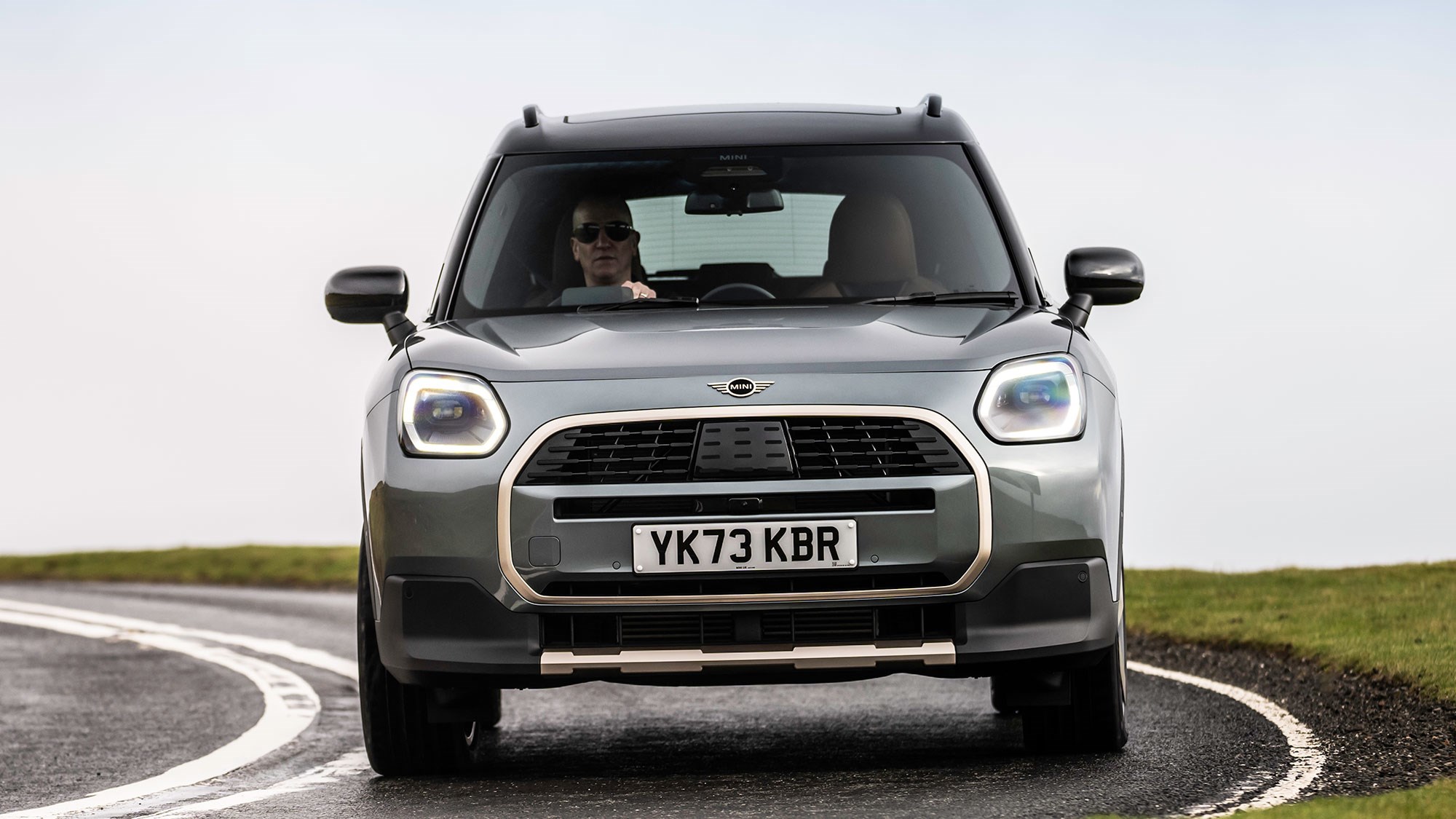
But the Countryman compensates for that with its talkative controls. MINI hasn’t completely isolated the driver from the road, which is increasingly rare these days. You can feel the texture of the road in your palms and the steering wheel will squirm around in your hands if you apply power on your way out of a bend as the front wheels scrabble for grip. We’re not going to pretend that it’s anywhere near as engaging as a proper sports car (such as the Mazda MX-5 or Toyota GR86) but, for a family bus, it’s great.
The Countryman’s suspension system is similarly driver centric. It’s considerably firmer than the suspension you’ll find under a Qashqai or a Sportage, but that extra stiffness means the MINI corners flatter.
It sacrifices some ride quality to do that, but you couldn’t ever call it uncomfortable. It shrugs over dents with the same sort of confidence as a seasoned airline pilot dealing with turbulence. You feel the jolts, but they’re not enough to unsettle you.
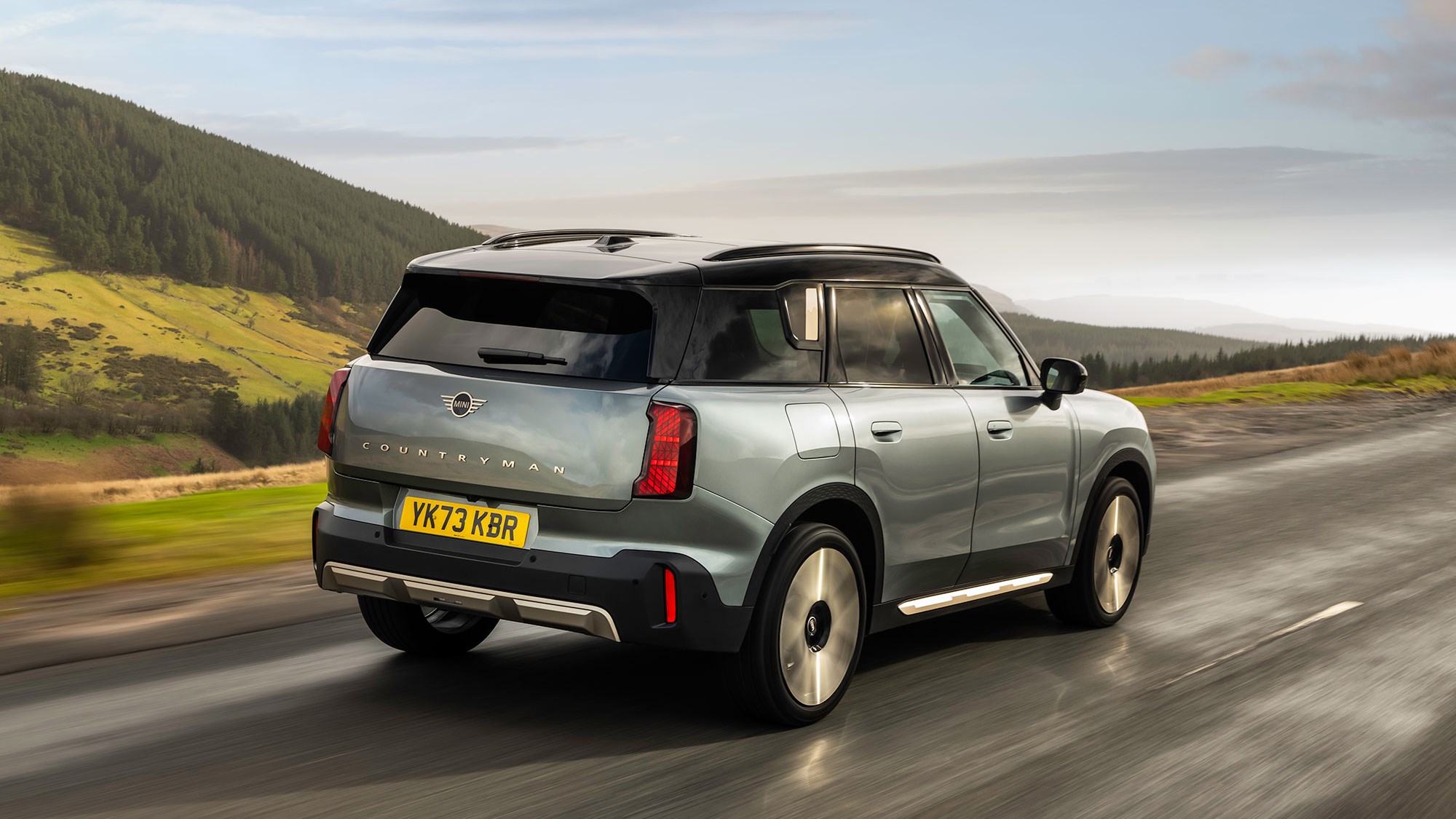
We should probably mention MINI’s unusual drive modes, too. The company calls them ‘Experience Modes’ and, in addition to subtly tweaking the throttle response and steering weight, they each have a dedicated theme for the infotainment system.
So, Go Kart mode show a sporty modern rev-counter, while the Timeless mode features a Smiths-aping dial designed to look like the gauge cluster fitted to the original Mini. MINI also tells us that each mode has its own augmented engine noise piped through the stereo but, having tried all the modes, we couldn’t really tell the difference.
What about the interior?
It’s unlike anything else on sale – and that’s a good thing. We think automotive interior design has stagnated in recent years, so it’s nice to watch MINI take a genuine stride away from its competitors.
Every version of the Countryman is fitted with a circular 24cm-diameter touchscreen. It’s an attractive-looking piece of tech with crisp graphics and a simple menu layout. Our only real criticism is that it’s quite laggy when swapping between menus and drive modes, but we expect MINI will be able to improve that with an over-the-air update.
The cabin ergonomics are a bit of a sticking point, however. MINI moved the Countryman’s climate controls onto the infotainment screen – and the icons used to adjust the cabin temperature at 5 and 7 o’clock on the screen are frustratingly small.
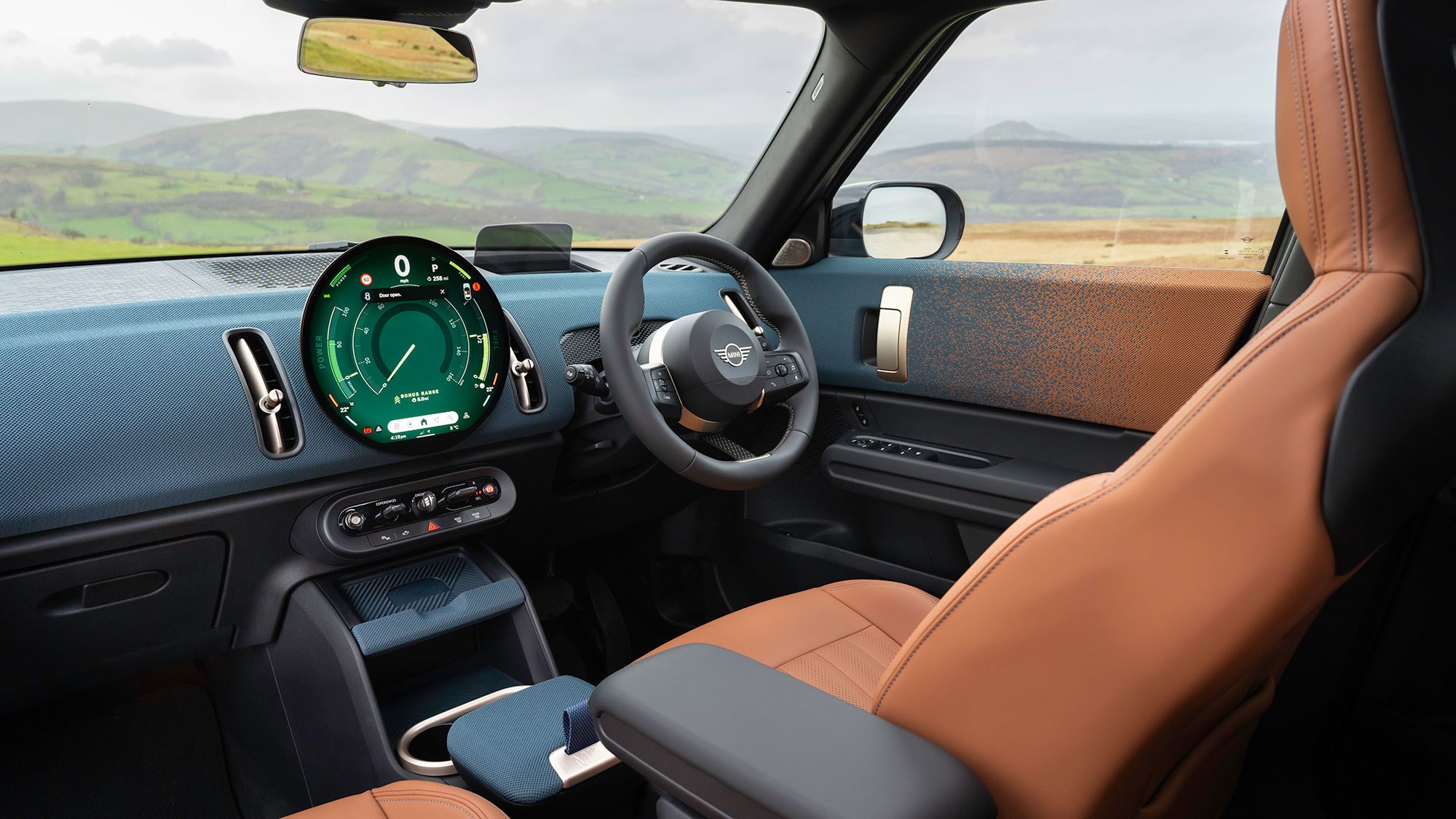
It’s a nice place to be, though. We don’t normally pass judgement on trim design, but we’ll make an exception for the Countryman because it’s so interesting. Look at the way the blue fabric trim on the dashboard fades into the orange fabric trim on the door cards. It’s very pretty.
Plus, it’s functional. The darker trim more readily recedes into your peripheral vision, which helps to keep your attention focused on the road. The fabric also feels hard wearing and far more premium than the plastic and faux leather trims you’ll find in a Nissan Qashqai or Kia Sportage.
There’s loads of space inside, too. The new Countryman is 145mm longer, 64mm wider and 104mm taller than the car it replaced. That means legroom, headroom and shoulder room is plentiful, even for those in the back. The middle rear seat is a bit cramped for long journeys, but the same can be said of almost all the car’s rivals.
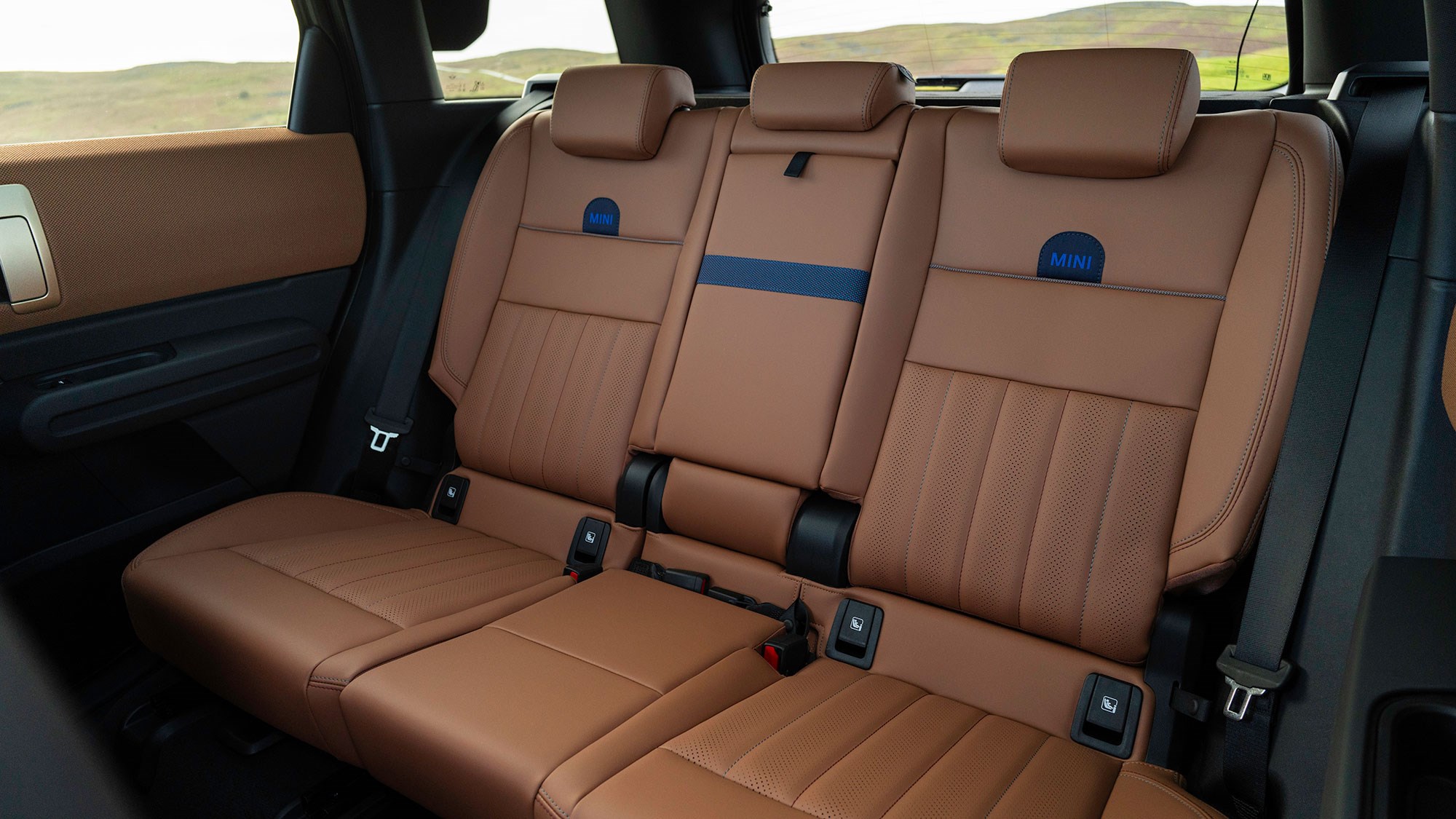
Because the new Countryman is bigger than the old model, you also get a bigger boot. There are 480 litres of space behind the rear seats or, if you fold the bench flat, up to 1390 litres. That first figure is 30 litres more than the previous car – and you can slide the rear bench backwards and forwards by 13cm to balance passenger comfort against boot capacity.
What else should I know?
The Countryman’s infotainment system looks great, but you might find it difficult to use when you first step into the car (unless you’re used to driving a Tesla). Everything, including the car’s speed and engine revs, is shown on the display – and it takes a while to get used to looking at the centre of the cabin to check your speed.
You can skirt around this issue by spending a little extra on MINI’s optional head-up display. You get it as part of the firm’s Level 1 option pack – and it adds a small flip-up screen ahead of the driver that relays your speed info and navigation instructions. It’s an option well worth having because it makes the cabin a lot more approachable and familiar.
Not one to miss out on an opportunity for a gimmick, MINI has given the Countryman customisable LED tail lights. You can choose from a Union Flag motif or the solid design you see below.
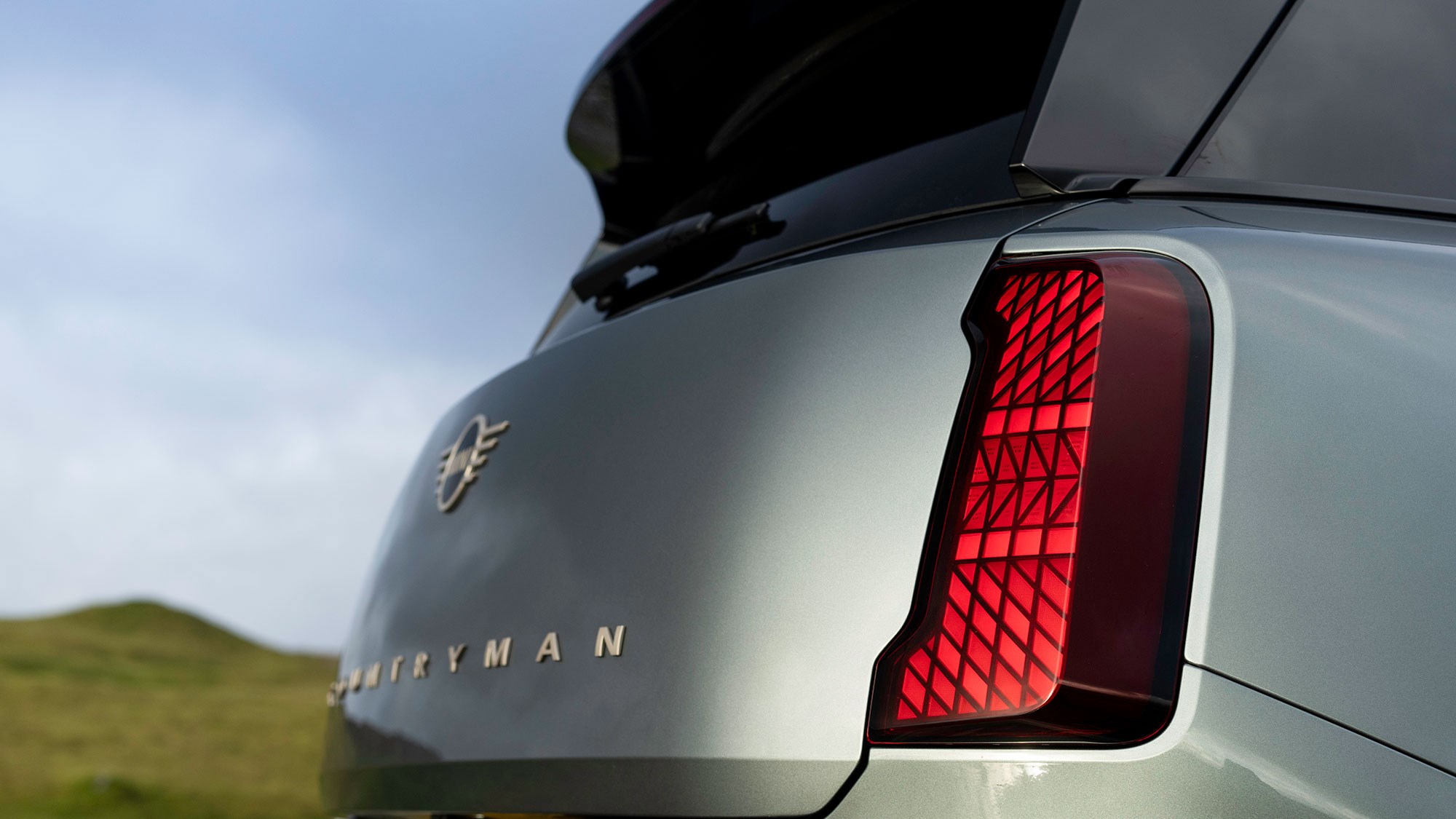
You also get an AI assistant for the car’s infotainment system. It’s an animated British bulldog called Spike who can help you adjust the climate control, radio station and navigation instructions, as well as provide details about your journey (such as the weather forecast).
It’s a bit contrived, though. Much like the animated assistant in the Smart #1, Spike’s Robocop voice doesn’t match his cutesy looks.
Verdict
Strange technology gimmicks aside, the MINI Countryman is a deeply impressive family SUV. It might only be just practical enough to carry your family around, but it makes up for that with its attractive design, stunning build quality, strong levels of standard equipment and stellar driving experience.
Unless you’re planning on setting land speed records at the weekend, we reckon you’ll be best served by the 1.5-litre three-cylinder Countryman C. It might be the entry-level model, but it still has enough power to be great fun. Plus, it’s the most efficient and it sounds the best.
Instead of spending your cash on performance upgrades, we recommend splashing a few pound notes on improving the Countryman’s technology and equipment. Things like the head-up display make it easier to live with and the personalisation options open to you make the world of difference to the interior ambience.